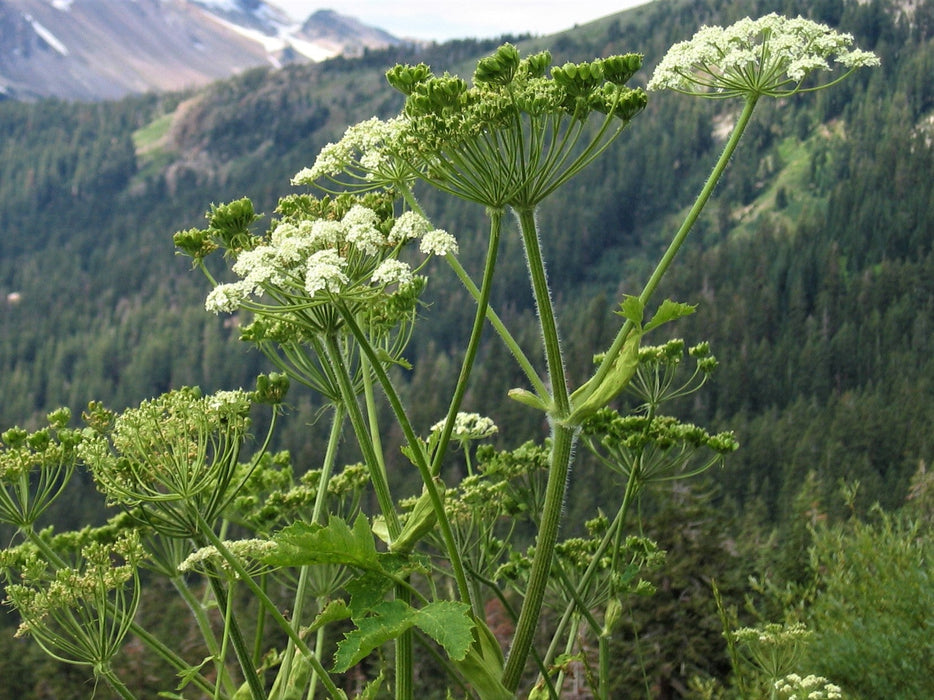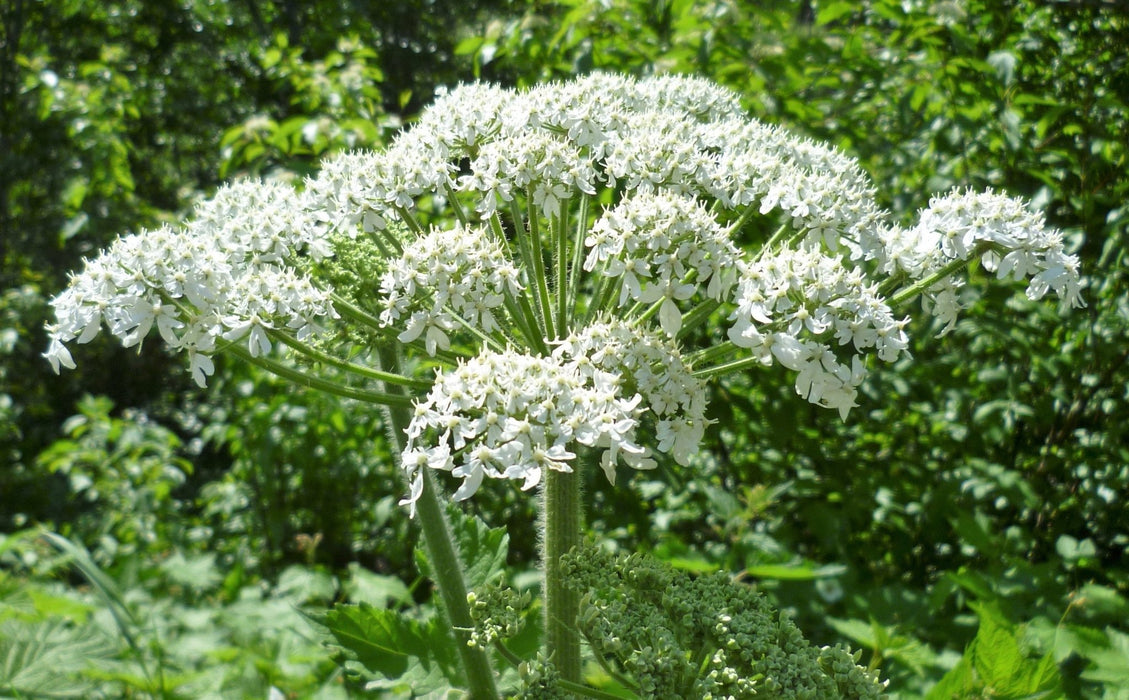
Cow Parsnip Seeds (Heracleum maximum)
One of our best pollinator plants!
At up to 7 feet in height with massive white umbels and large leaves over a foot in width, this is not your average wildflower. And yet for people who are fascinated by watching a constant parade of different types of insects, this is potentially the best plant we sell. Countless types of native bees, wasps, flies, butterflies, moths, and beetles, hum across the flowers, collecting the readily available nectar from the shallow florets. But because cow parsnip is a biennial, it makes you wait – just growing its root system and foliage in first year, then sending up its towering flowers in the second year.
Because of its large size, this is a plant for the wild edges of a garden. In natural settings it tends to hang out in fertile damp soils, sunny river bottoms, and woodland edges. It would probably do great in the edges of hedgerows, or growing as a cluster in a sun dappled urban alley to see what insects are in the neighborhood. It’s native to most of North America, making it adaptable to a huge range of different conditions and elevations. For companion planting, we’ve seen it grow well with big leaf lupine, where both species create a tall, colorful planting that deer will not touch.
Cow parsnip tends to be confused with poison hemlock and the invasive (non-native) giant hogweed, but this is a true native, with a long history of human uses. That said, like many members of the carrot family, the leaves and outer stem can cause skin rashes and blisters as the sap reacts with sunlight. For that reason, it is best maintained in areas you don’t plant to walk through, and you should wear gloves if you handle the foliage. Under natural conditions, cow parsnip is dependent on having enough bare ground to re-seed itself, but unlike it’s invasive relatives, it is not an aggressively spreading plant. In fact if you want it to stick around, you may need to intentionally plant more after several years.
Approx. 50 seeds (0.5 gram).

